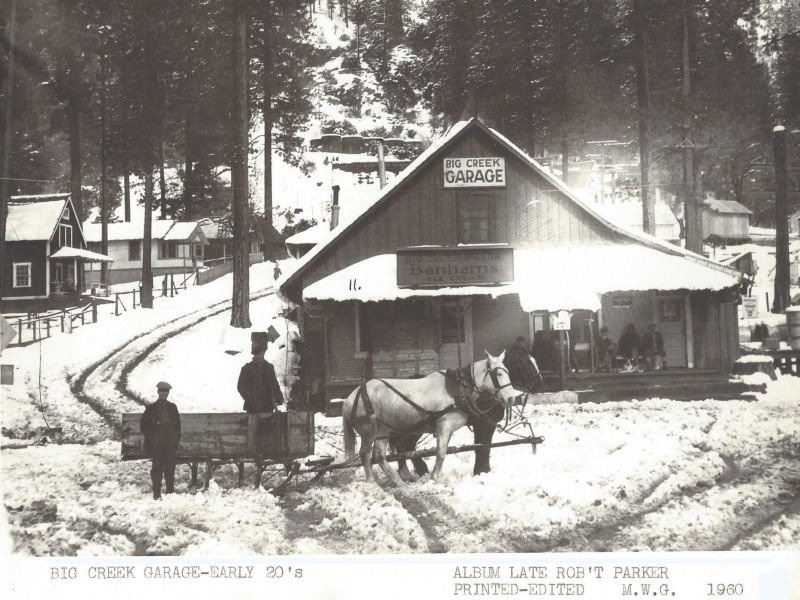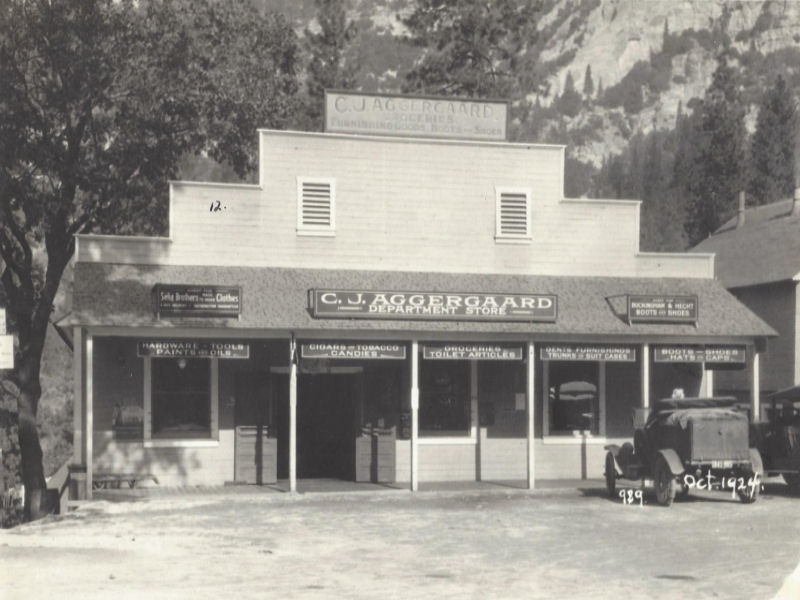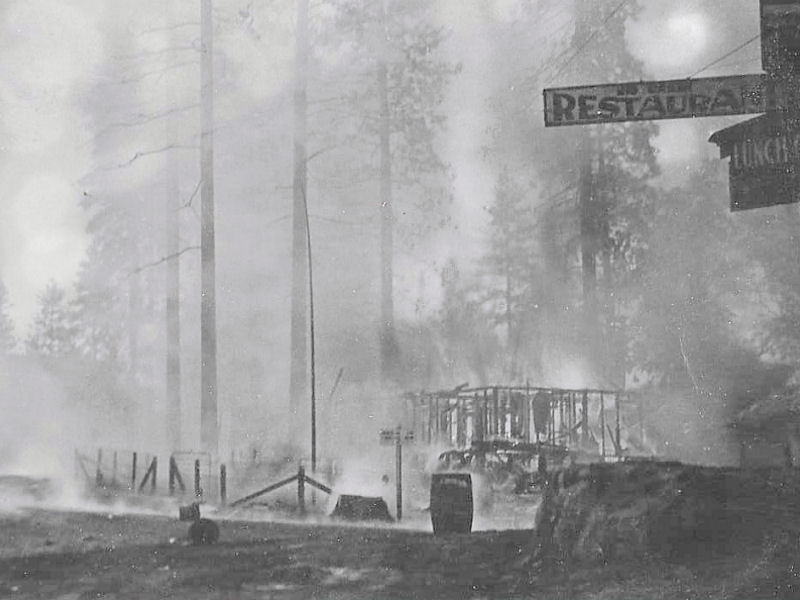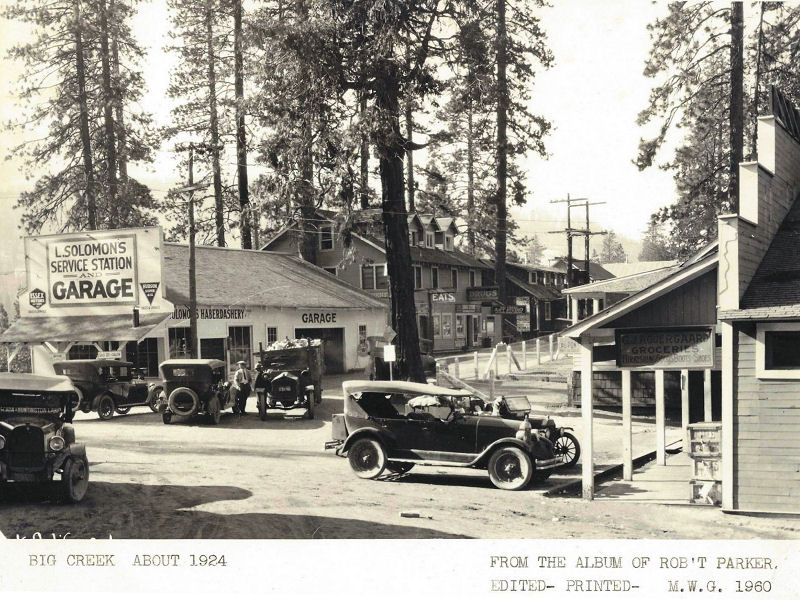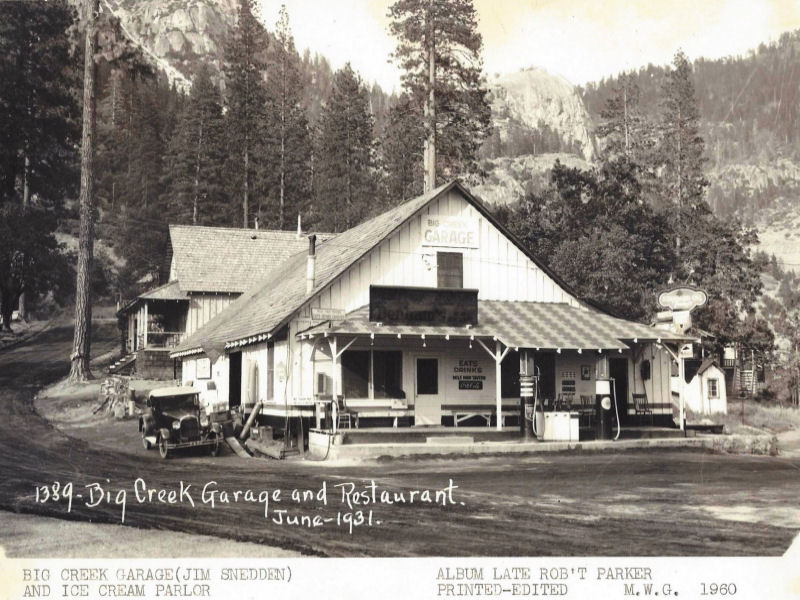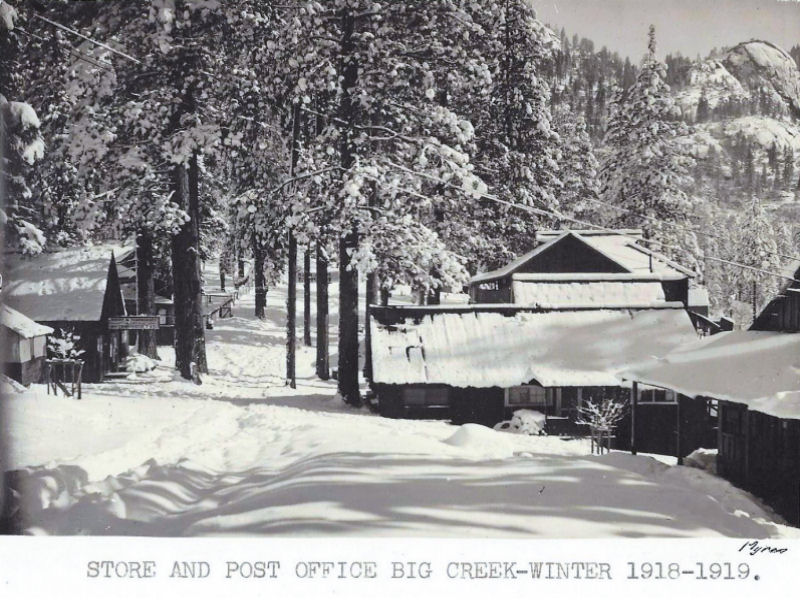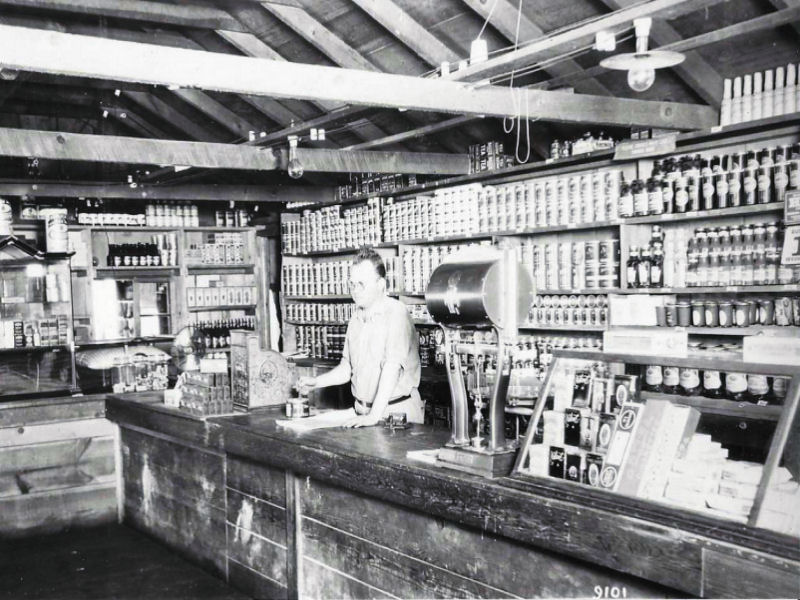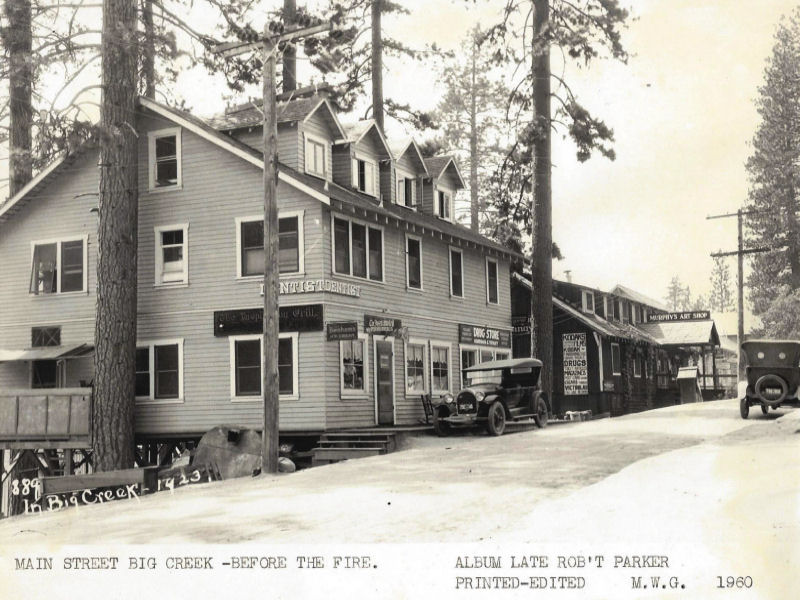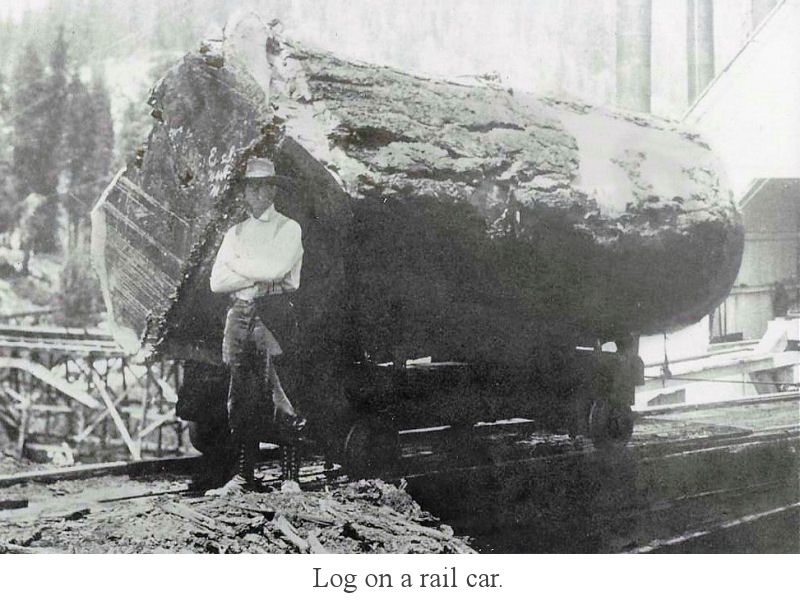History of the town of Big Creek California
Big Creek, California includes 730 nearby mines. Big Creek (Big Creek Flats in the 1870s; Manzanita Park in 1902; until 1926 Cascada) is a small census-designated place in Fresno County California located in the Sierra Nevada Mountains on the north bank of Big Creek. It lies at an elevation of 4984 feet
Superficial placer mining was done here during the early days and sporadic lode mining from the 1890s to around 1915. A few narrow quartz veins contain free gold and often abundant sulfides. The country rock is granite and schist. A number of contact metamorphic zones in the region contain tungsten and some rare barium minerals, including sanbornite. The chief gold sources were the Contact and Hancock mines.
The Southern California Edison Company built the Big Creek hydroelectric complex, which consisted of several dams, tunnels, penstocks, and powerhouses. The purpose of the project was to supply a rapidly growing Los Angeles with electrical power. After all, this was the "Roaring 20's".
Camp 73 was a work camp for much of this construction. All this predated Roosevelt's WPA dam-building rampage of the 1930's by 10 years, which resulted from government action to fight the depression.
The Big Creek Hydroelectric Project first went into initial development with the help of John S. Eastwood. He had become interested with the possibility of developing power for Fresno and was the first to recognize the power possibilities in the region. Mr. Eastwood was a true visionary and was involved with many civil engineering projects in the San Joaquin Valley and High Sierras.
He led many survey parties to find the true potential of developing a hydroelectric project in the area with one of his most prominent contributions being the invention of the multiple-arch concrete dam. Henry Huntington’s Pacific Light & Power Corporation began phase one of the project in 1910. During this phase three dams were constructed to form Huntington Lake Reservoir, and Powerhouses No. 1 and No. 2 were put into operation.
With Big Creek being so remote the San Joaquin & Eastern Railroad Company was organized as a subsidiary to the Pacific Light and Power Corporation. Contracted with the Stone & Webster Construction Company out of Boston, authority was given and construction began on February 5, 1912. A short 157 days later a 56 mile railroad was completed, which is an engineering feat within itself.
In 1917 Southern California Edison absorbed Pacific Light and Power and phase two of the project began with David H. Redinger as the Resident Engineer. The end result of the first two phases included six dams, eight tunnels (one thirteen miles long), three artificial lakes, and five powerhouses.
In 1949 phase three of the project was started. With the completion of phase four, generating capacity went from 300,000 kilowatts to 1,288,000 kilowatts. Today there are 6 major reservoirs, 27 dams, and 9 powerhouses generating a total of 1,000 megawatts.
History from: Vaughn's Summaries
National Geographic
Calisphere, University of California
